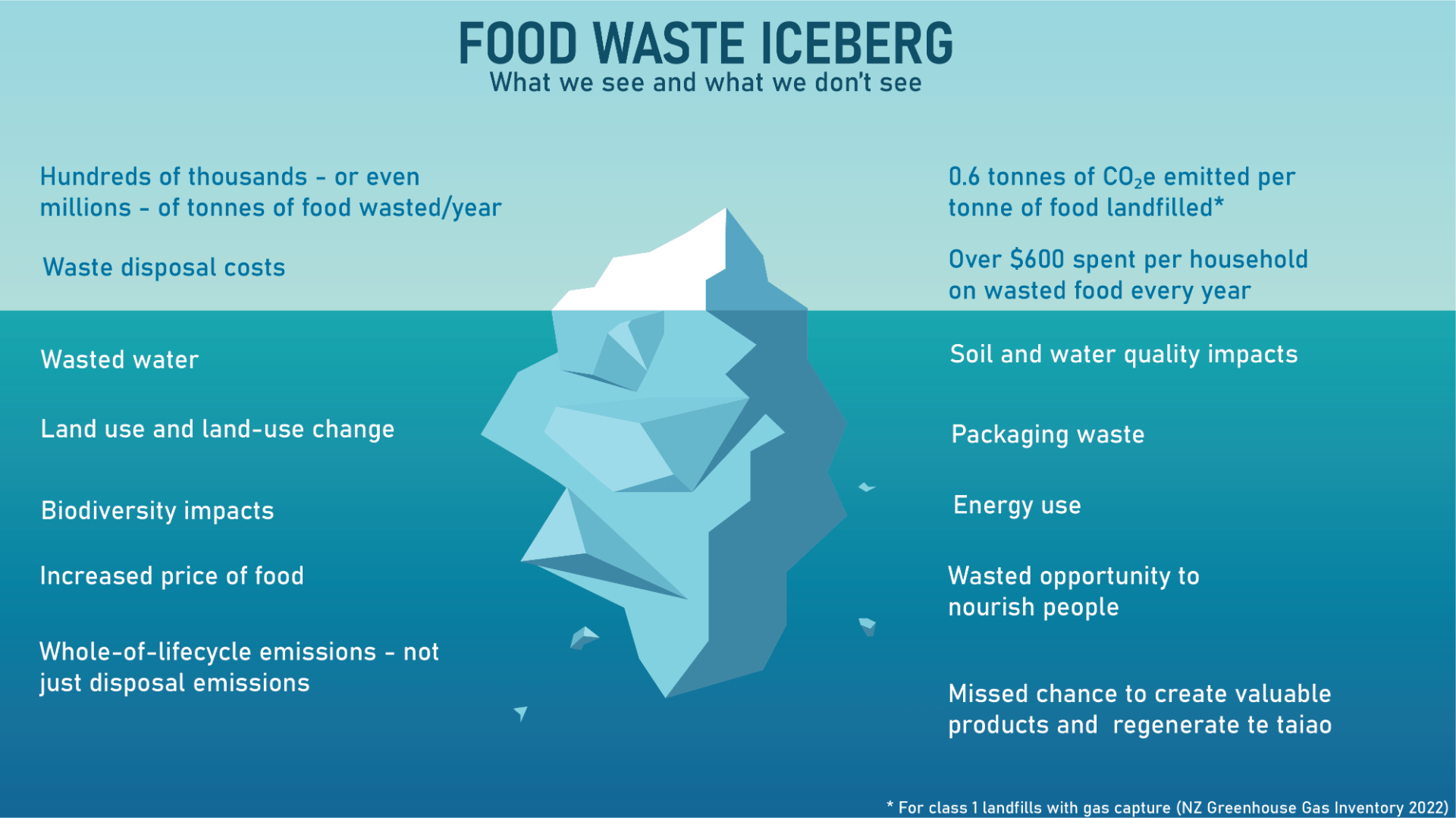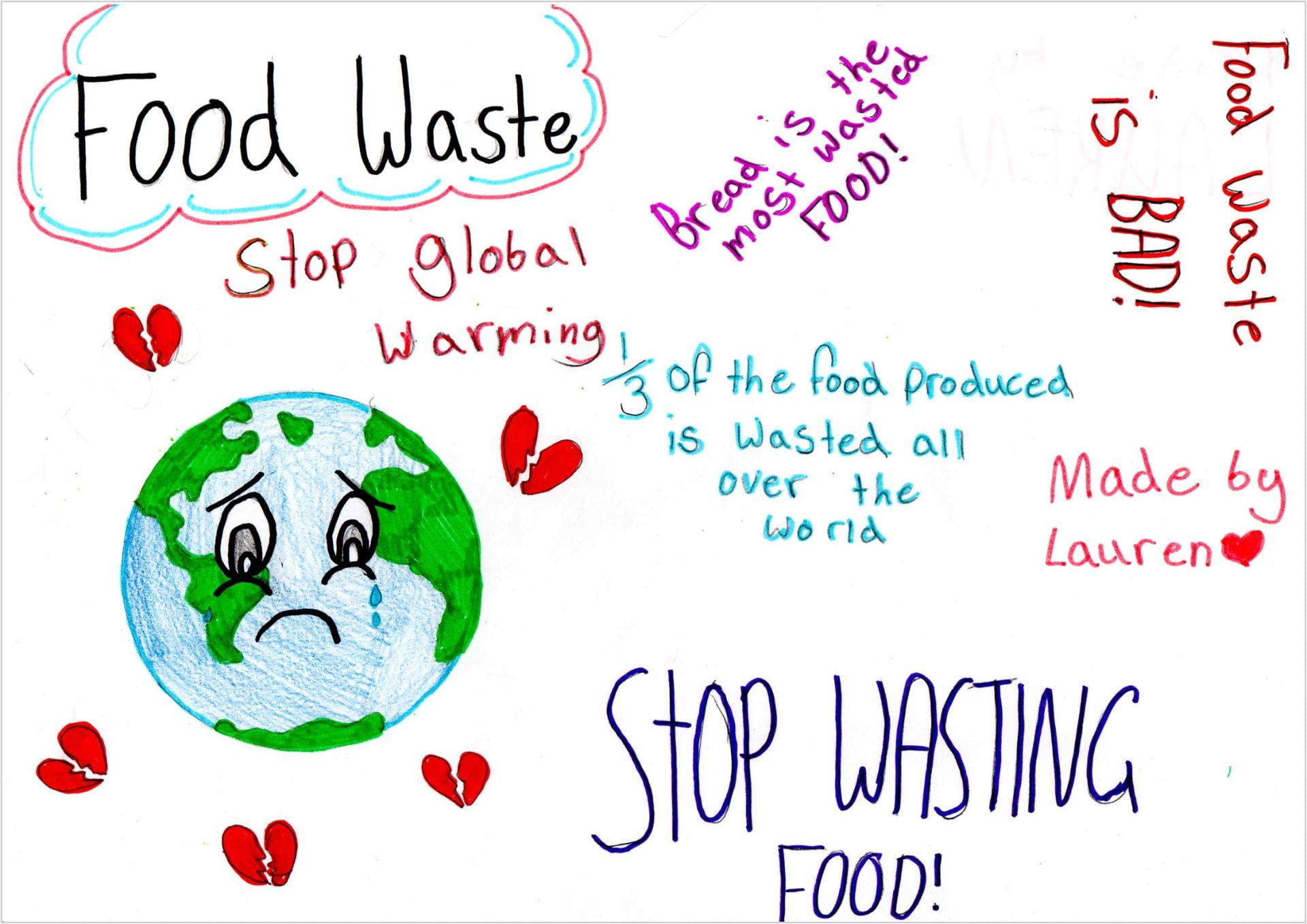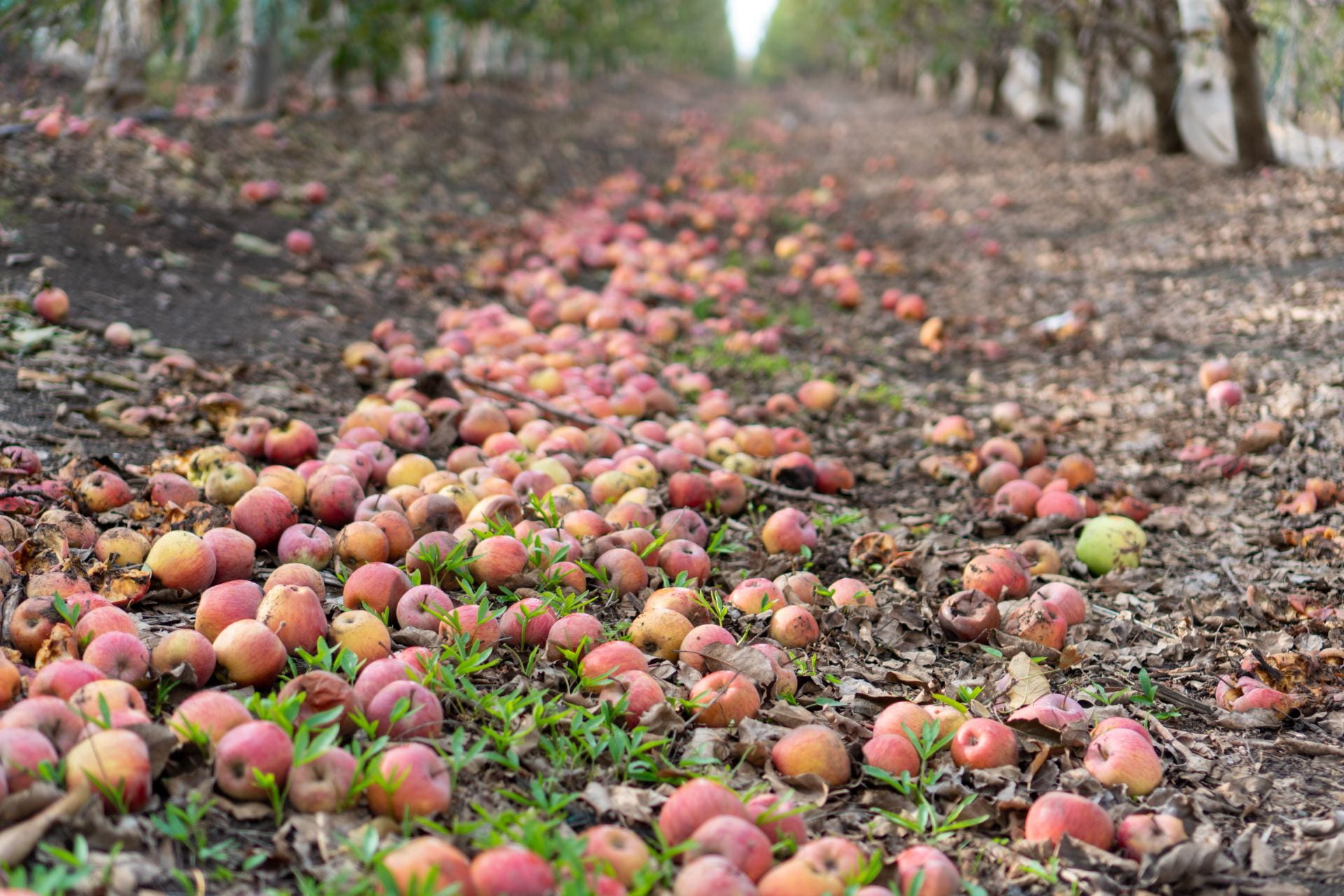Why does food waste matter?
Food waste is a global and local problem with significant environmental, social, and economic impacts.
It is a so-called ‘iceberg problem’, with a few impacts that are clear to see and many larger ones hidden beneath the surface.

The food waste iceberg, adapted from the Food and Agricultural Organisation of the United Nations. CO2e = carbon dioxide equivalent.
At the tip of the iceberg are the direct financial costs and environmental harms associated with wasting food. In 2018, the average New Zealand household spent about $650 on food that they threw away – equivalent to almost $800 in 2023. When businesses waste food, they have to pay disposal fees to cover the landfill levy and the cost of waste collection and landfill operation. When our food ends up in landfills, it produces leachate and releases methane and other greenhouse gases as it rots. Even with gas capture systems in place, an estimated 0.6 tonnes of carbon dioxide (CO2)-equivalent is released into the atmosphere per tonne of food landfilled.
Beneath the surface, it gets worse. When food is wasted, all the water, energy, labour, land, and other resources that go into food production are wasted too. Further, the emissions associated with the production of wasted food are for no benefit. Wasting food means we fail to embrace a circular approach to resource management and miss a chance to nourish people in a country where 13.4% of children live in households experiencing food insecurity. With te ao Māori worldviews highlighting the importance of sustainable relationships with the environment, wasting food also fails to honour New Zealand’s deep-rooted knowledge of the importance of kaitiakitanga and intergenerational environmental stewardship.

A poster created by a Year 7 New Zealand school student as part of a Food Waste Literacy research project undertaken by Dr Deepa Goswami. You can read Deepa’s PhD thesis here. Thanks Lauren!
The scale of our food waste problem

Globally, an estimated 2.5 billion tonnes of food is wasted from farm to fork each year – that’s about 40% of all food that’s produced. In Aotearoa, data on food waste is patchy, but likely amounts to hundreds of thousands or even millions of tonnes across the food system each year. This includes about 300,000 tonnes wasted in New Zealand households, over half of which is avoidable (i.e. food that could have been eaten).
The Ministry for the Environment has committed to estimating how much food New Zealand wastes, which will help us better understand the scale of the problem. Understanding the scale of food waste will help with the design of strategic interventions to reduce food waste’s negative environmental, social, and economic impacts.
However, lack of data shouldn’t be an excuse for lack of action – we know enough about the problem to get started now.
Date released: 29 March 2023
Last updated: 29 March 2023